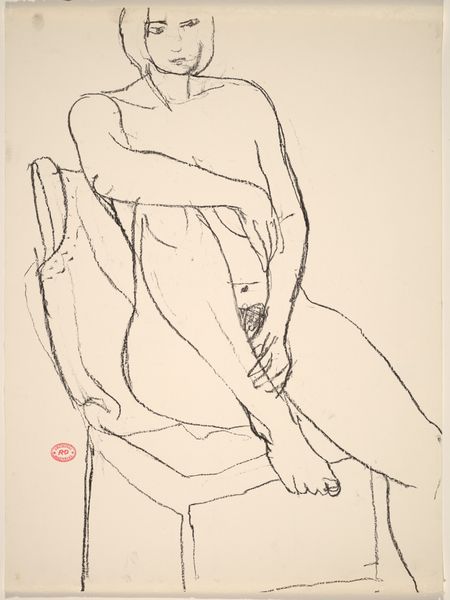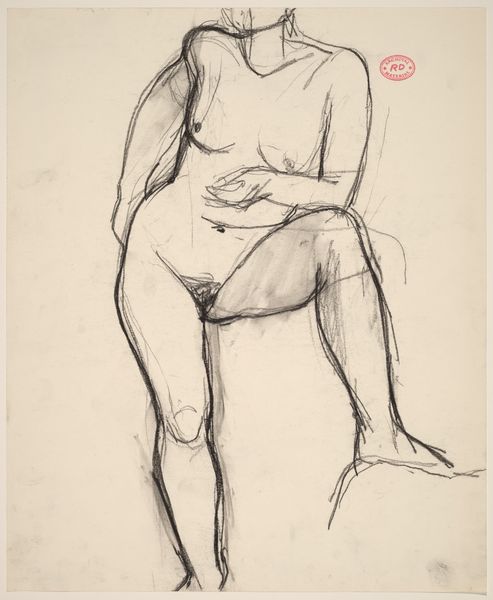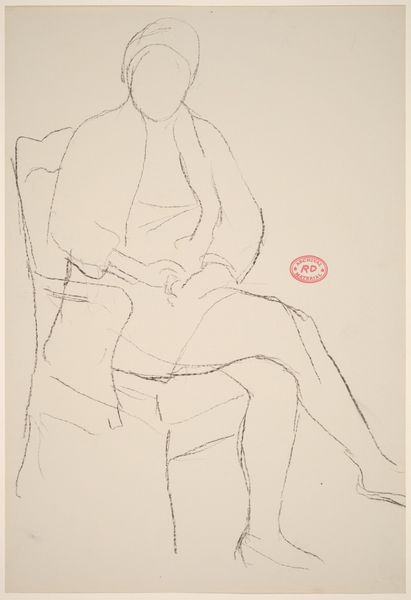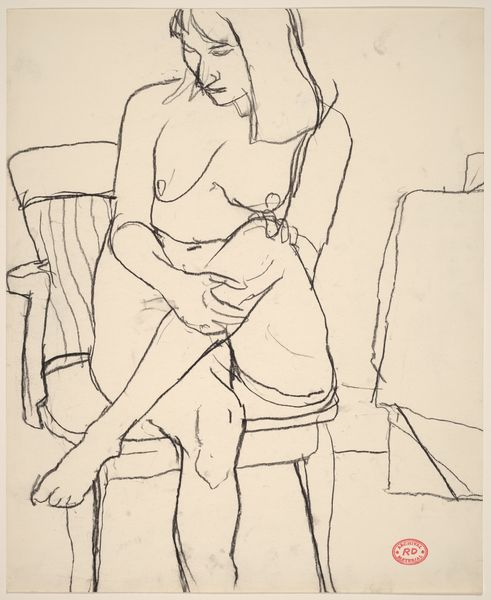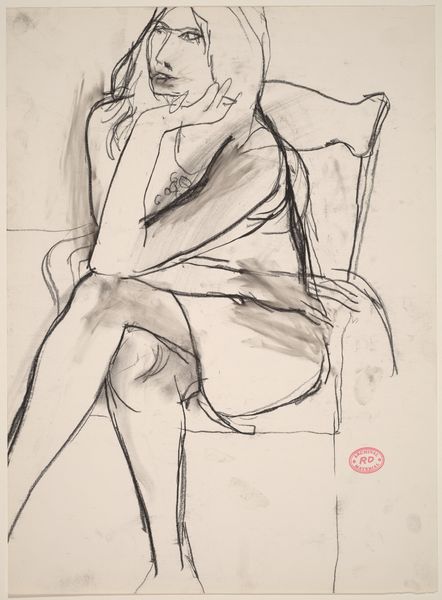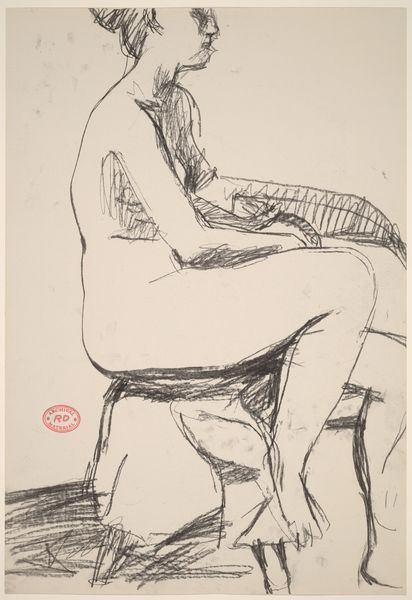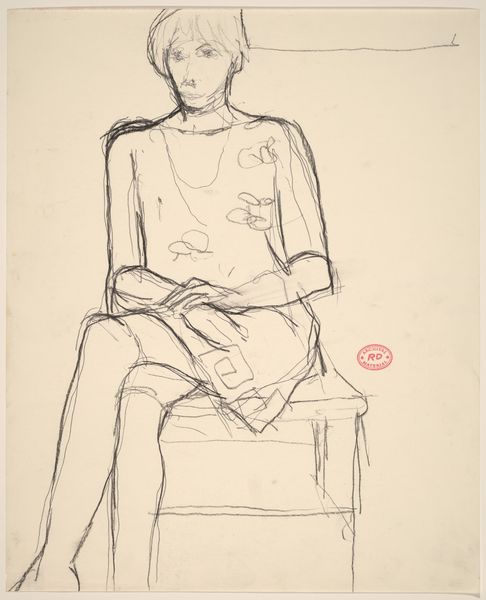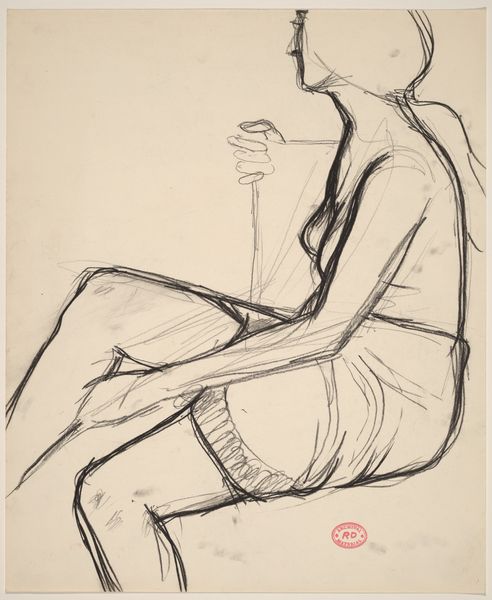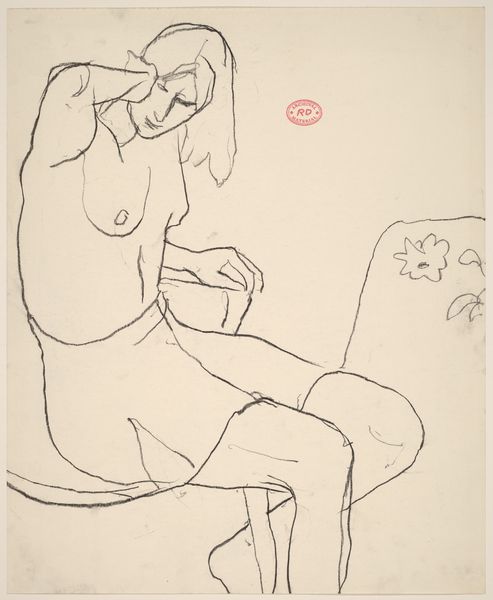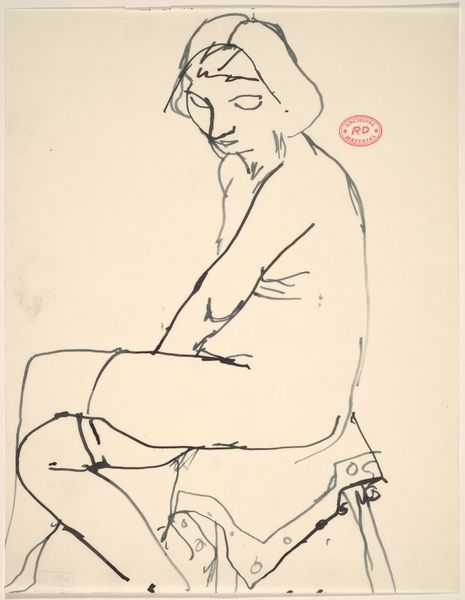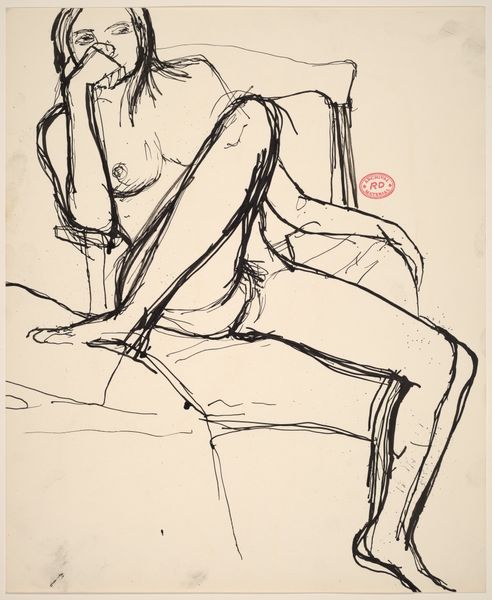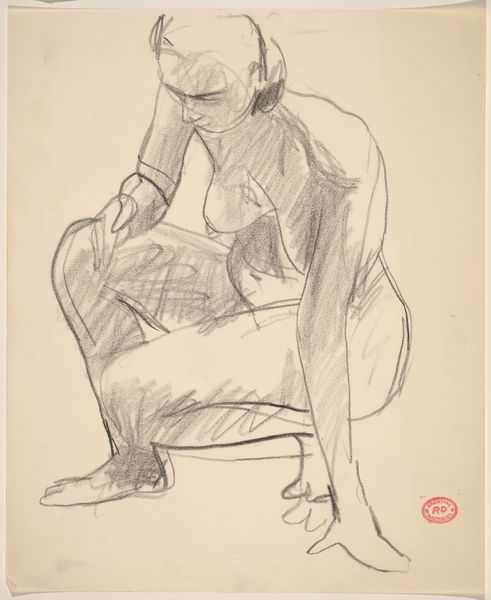![Untitled [seated female nude in an open shirt turning away] by Richard Diebenkorn](/_next/image?url=https%3A%2F%2Fd2w8kbdekdi1gv.cloudfront.net%2FeyJidWNrZXQiOiAiYXJ0ZXJhLWltYWdlcy1idWNrZXQiLCAia2V5IjogImFydHdvcmtzLzYzNTE4ODZjLTNmNTktNDk2Zi04OTUxLTY2ODFiOGFjOTI1Yi82MzUxODg2Yy0zZjU5LTQ5NmYtODk1MS02NjgxYjhhYzkyNWJfZnVsbC5qcGciLCAiZWRpdHMiOiB7InJlc2l6ZSI6IHsid2lkdGgiOiAxOTIwLCAiaGVpZ2h0IjogMTkyMCwgImZpdCI6ICJpbnNpZGUifX19&w=3840&q=75)
Untitled [seated female nude in an open shirt turning away] 1955 - 1967
0:00
0:00
drawing, pencil
#
portrait
#
drawing
#
figuration
#
bay-area-figurative-movement
#
pencil
#
ashcan-school
#
nude
#
realism
Dimensions: overall: 60.1 x 48 cm (23 11/16 x 18 7/8 in.)
Copyright: National Gallery of Art: CC0 1.0
Curator: We’re now looking at Richard Diebenkorn’s “Untitled [seated female nude in an open shirt turning away],” a pencil drawing made sometime between 1955 and 1967. Editor: There's an immediacy here. The raw pencil lines, the way he captures the weight and volume of the figure…it feels like a glimpse into the artist’s process. Almost unfinished. Curator: I think you’re right, it captures process beautifully. Considering its placement in time, the mid-century, we can look at the influence of Abstract Expressionism on Diebenkorn’s practice, particularly in his emphasis on line and gesture. But equally, how it reacts to, perhaps even rebels against, the prevailing styles of the time. The Ashcan School roots are visible too, particularly that commitment to Realism through the depiction of the figure. Editor: And that simple chair she is seated upon speaks of both labor and intimacy—the working artist drawing a model, where the setting and the object depicted are equally of this world. It raises the question of art's role in portraying and perhaps reshaping the social fabric. Are these quick lines enough, for instance, to render her visible as something more than a body, a figure, a labor object? Curator: Well, there is definitely an intimate tension in it. The figure's gaze is averted, turned away, which invites the viewer to contemplate her thoughts and her relation to the artist’s vision. Editor: The open shirt creates a complex negotiation between visibility and privacy. It points to societal norms about women's bodies. We should discuss more explicitly the male gaze present within this visual dialogue. Curator: That tension between the nude and the clothed does lead us down a particular interpretive path, absolutely, that can reflect certain power dynamics, the politics of portrayal, particularly if this piece were to be placed alongside pieces showing female artists portraying nudes. Editor: Seeing it that way adds to my understanding, even highlighting aspects I would have missed initially. Curator: Indeed. Examining the work this way helps expose the interplay of influences, material agency, and the subtle political layers at work here.
Comments
No comments
Be the first to comment and join the conversation on the ultimate creative platform.
